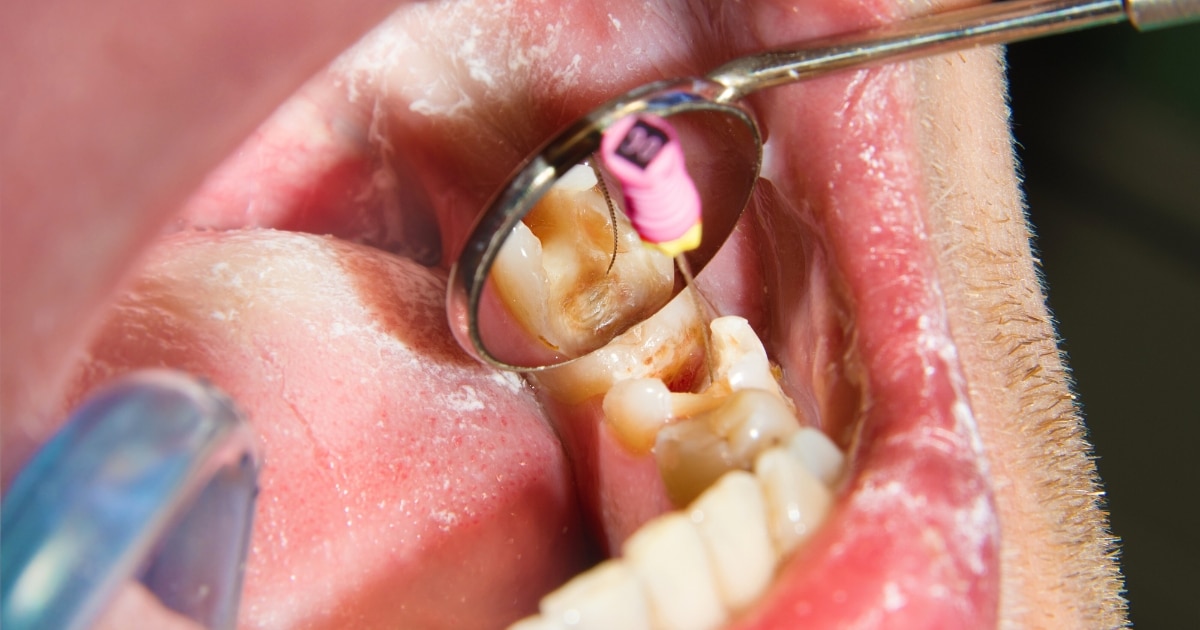Facing a dental emergency can be a stressful experience for you. One of the most common emergency dental procedures is a root canal. While the term “root canal” might intimidate you, modern dentistry has made the process relatively pain-free and highly effective. Knowing the basics of this emergency procedure can help you stay calm.
Read this blog to recognize the symptoms of a dental emergency to know if you need this dental surgical procedure or not.
Why Is Root Canal A Necessity For Dental Emergency?
This dental procedure is designed to save your severely infected. The treatment involves removing the infected or damaged pulp from inside the tooth and cleaning and disinfecting. While this surgical procedure is often planned, there are situations when you might have to undergo this treatment to combat an emergency issue.
Your infection might spread without timely intervention. That’s why it’s crucial to seek professional help as soon as you notice any signs of trouble.
What Signs Indicate You Might Need an Emergency Root Canal?
Here are some common signs to watch out for:
- Persistent or intense pain, especially when chewing or applying pressure, is a key indicator that you might require a root canal.
- Swelling around the affected tooth or in your face can signal an infection that needs immediate attention.
- If you experience prolonged sensitivity to hot or cold temperatures, the pulp inside your tooth may be damaged.
- A tooth that has turned gray or dark may indicate that the pulp inside your tooth is dying or dead.
If you experience any of these symptoms, you must immediately seek root canals in Northside Richmond. Delaying treatment can lead to more severe complications, including abscesses or tooth loss.
What to Do Before Your Emergency Appointment?
While waiting for your emergency appointment, there are steps you can take to manage your pain and discomfort:
- Medications like ibuprofen or acetaminophen can help you reduce pain and inflammation.
- Applying a cold compress to the outside of your cheek can help reduce swelling and numb the area.
- Stick to soft foods and avoid chewing on the affected side of your mouth to prevent further irritation.
- Call the dentist to schedule an emergency appointment as soon as you notice symptoms.
These steps can help you stay comfortable while waiting for your procedure.
What Happens During an Emergency Root Canal Procedure?
Understanding what happens during an emergency root canal can help ease any anxiety you might have about the procedure. Here’s a step-by-step breakdown:
Initial Examination and X-rays
The dentist will begin by examining your tooth and taking X-rays to assess the extent of the damage. This helps them plan the procedure effectively.
Anesthesia
The dentist will administer local anesthesia to numb the affected tooth and surrounding area. You should feel little to no pain during the procedure.
Pulp Removal
Once the area is numb, the dental professional will create a small opening in your tooth to access the pulp chamber. They will then remove the infected or damaged pulp using specialized tools.
Cleaning and Shaping
After removing the pulp, they will clean and disinfect the teeth chamber to eliminate any bacteria. They will also shape the canals to prepare them for filling.
Filling and Sealing
The cleaned and shaped canals are filled with a biocompatible material called gutta-percha. This material will seal the canals to prevent future infection.
Temporary or Permanent Restoration
Depending on the condition of your tooth, the dentist may place a temporary filling or crown to protect it until a permanent restoration can be completed. In some cases, a permanent crown may be placed during the same appointment.
Modern treatments are designed to be pain-free, so there’s no need to fear the procedure. The dentist will ensure you’re comfortable throughout the process.
How To Recover From An Emergency Root Canal?
Proper aftercare is essential for a smooth recovery and long-term success of your root canal treatment. Here are some tips to follow:
- It’s normal to experience some soreness after the procedure. Over-the-counter pain relievers can help you manage any discomfort.
- Stick to soft foods and avoid chewing on the treated tooth until it’s fully restored with a permanent filling or crown.
- Continue maintaining usual oral hygiene, but be gentle around the treated area to avoid irritation.
- Attend any scheduled follow-up appointments to ensure your tooth is healing properly and to complete the permanent restoration.
By following these aftercare tips, you can help ensure a successful recovery.
An emergency root canal procedure can easily save a damaged or infected tooth and relieve pain. By recognizing the symptoms early and seeking prompt treatment, you can avoid more serious complications and protect your oral health. Modern treatments are designed to be comfortable and pain-free, so there’s no need to delay seeking help.
Ready to treat your dental infection? Contact us today for a consultation!




